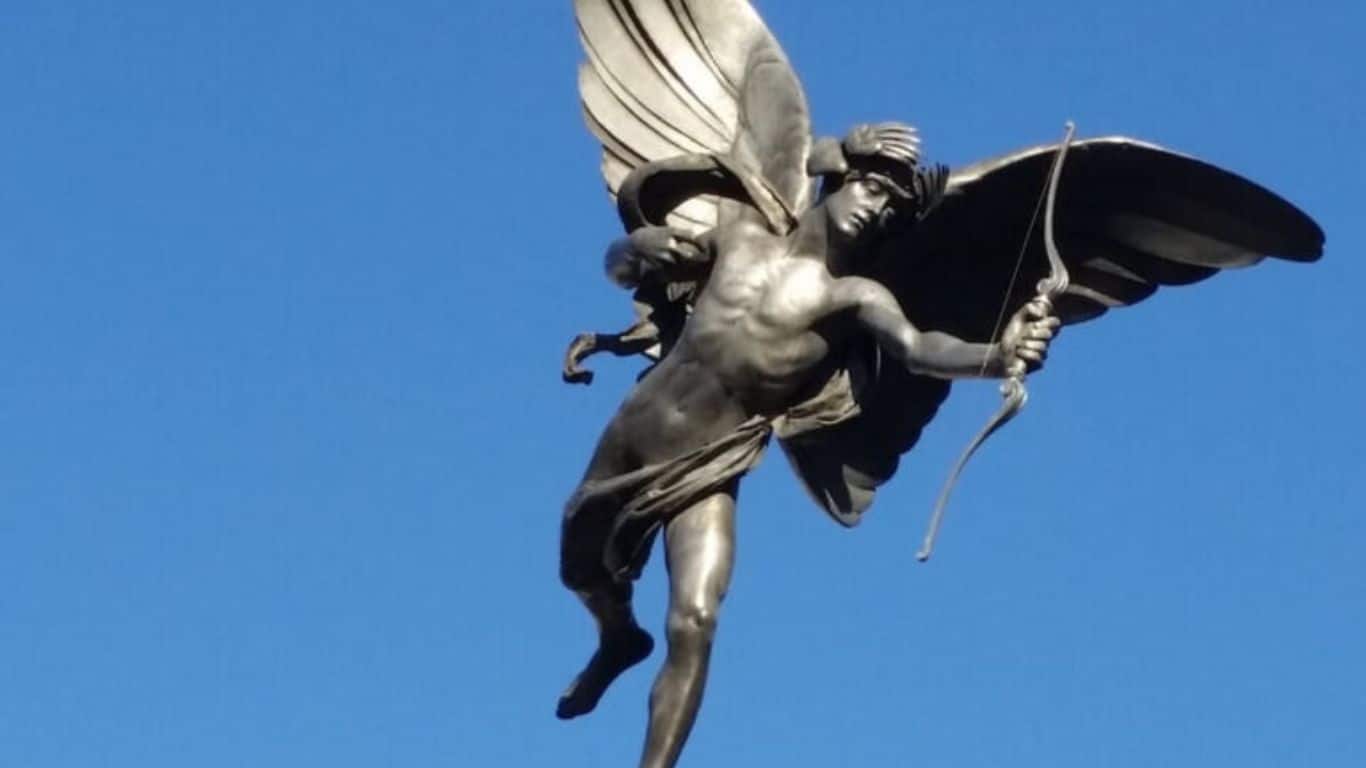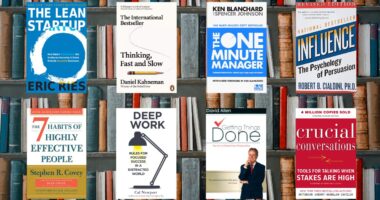10 Most Powerful Greek Mythology Weapons: Greek mythology boasts a wealth of fantastic and magical weapons, wielded by heroes, demi-gods, gods, and Titans alike. However, unlike Norse mythology, Greek myths are not typically associated with the legendary weapons of their characters. This may be due in part to the fact that while ancient Greeks were a culture steeped in warfare, they are not commonly remembered as such in modern times. Additionally, many of the weapons wielded by Greek gods and heroes lack formal names, instead being referred to simply as, for example, Poseidon’s Trident or Apollo’s Bow. Nonetheless, the multitude of weapons in Greek mythology is impressive and their abilities are nothing short of awe-inspiring. Indeed, these mythological artifacts and weapons have inspired not only the magical objects found in modern fantasy, but also the myths and legends of ancient religions across the globe.
10 Most Powerful Greek Mythology Weapons
Zeus’s Thunderbolt

The Thunderbolt, a powerful weapon in Greek mythology, was a significant tool in Zeus’ rise to power. This weapon was not merely a tool to generate lightning and thunder, but an actual physical object that the Cyclopes gave to Zeus after he freed them and defeated his own father, Cronus, who had been their jailor. The Thunderbolt enabled Zeus to unleash unstoppable bolts of lightning that could decimate anything in their path.
Using the Thunderbolt, Zeus maintained an unchallenged rule over the Greek pantheon and the world. Legend has it that he still uses it to rule Olympus to this day. One of his greatest feats was killing the giant serpent Typhon, who Gaia sent to seek revenge for the murder of Cronus. Typhon was the Greek equivalent of Jörmungandr, the World Serpent from Norse mythology that Thor had to battle during Ragnarok. However, Zeus defeated Typhon almost effortlessly using the Thunderbolt, while Thor died in his fight against Jörmungandr.
Poseidon’s Trident

As the god of the sea and second most powerful deity in the Greek pantheon, Poseidon was often depicted carrying his legendary trident. The trident was a three-pronged spear fashioned after standard fishing tridents used by ancient Greek fishermen. However, unlike its mundane counterpart, Poseidon’s Trident was a magical weapon created by Hephaestus, the blacksmith god, with assistance from the Cyclopes.
The Trident was both beautiful and perfectly sharp, and Poseidon rarely appeared without it. With a single strike of the Trident, Poseidon could generate massive tsunami waves capable of sinking entire fleets or flooding entire islands. The weapon’s power was not limited to water, as it could also cause earthquakes and pierce any shield or armor. The origins of Poseidon’s Trident highlight the importance of fishing in ancient Greek culture and how these everyday tools could inspire myths and legends.
Hades’s Bident (or Trident)

The Bident of Hades, sometimes referred to as Hades’s Pitchfork, while not as well-known as Poseidon’s Trident, has had a lasting impact on mythology and culture. Many Underworld gods, devils, and demons in other cultures have been depicted carrying bidents or tridents to torment the souls under their care, and it is likely that Hades played a significant role in creating this image.
Evidence that Hades’s Bident may have served as the inspiration for the “Devil’s pitchfork” can be found in Seneca’s Hercules Furens. In this play, Hades is described as using a bident or trident named Dis in Roman or Plouton in Greek, respectively. Hades employs the weapon to successfully drive Hercules out of the Underworld. Seneca also referred to Hades’s Pitchfork as the Infernal Jove or the Dire Jove. According to Seneca, the weapon was associated with ominous or ill omens, adding to the weapon’s mystical allure.
The Aegis

Crafted by Hephaestus, the Aegis is a shield that also serves as a weapon. In Greek mythology, the Aegis is made of polished brass and is also known as a mirror or brass. Many gods have used the Aegis, including Zeus, Athena, and the hero Perseus.
Perseus’s use of the Aegis is particularly notable. He wielded the shield during his fight with Medusa, and after he killed and beheaded her, her head was placed on the Aegis to make it even more formidable. This act added to the already impressive reputation of the shield, which was known for its powerful abilities.
Medusa’s Head

The story of Medusa and her infamous head, with hair made of snakes, is a well-known myth that has been reinterpreted throughout history. The head of Medusa was regarded as a potent weapon in itself, as it was cursed to turn anyone who looked into its eyes to stone. Even after Perseus beheaded Medusa, her head retained its deadly power. Perseus gifted the head to Athena, who incorporated it into her shield, the Aegis, making it an even more powerful weapon. As a symbol of divine power, the Aegis with Medusa’s head served as a means of protection and intimidation, often depicted in art and literature as a representation of the goddess’s strength and power.
Hermes’s Caduceus

Hermes was granted the title of messenger of the gods by Zeus along with the Caduceus, a staff with a unique design of two intertwining serpents and two small wings at the top. The Caduceus represented Hermes’s speed and adaptability in his role as a messenger. Although it was not a weapon in the traditional sense, it had its own unique abilities. The Caduceus could induce sleep or even a coma in people, and conversely, could awaken them from slumber. It was also said that Iris, Hera’s messenger, carried the Caduceus in some myths. While not possessing the destructive power of other weapons, the Caduceus was a potent tool in the hands of a skilled user, one capable of manipulating the state of others.
Apollo’s Bow

The god of archery, was often depicted carrying a golden bow and a quiver of silver arrows. He is known for many things, including healing, music, dance, prophecy, and truth. One of his most iconic weapons is the golden bow, which he used to accomplish great feats. Apollo used his bow to kill Python, the serpent dragon who nursed the giant serpent Typhon, whom Zeus defeated with his Thunderbolt. It’s worth noting that Apollo accomplished this feat while still a child, making it all the more impressive. The golden bow remains a powerful symbol of Apollo’s skill and power, even in modern times.
Cronos’s Scythe

Cronus, the son of Gaia and Uranus, overthrew his own father and became the ruler of the Greek gods with the help of a powerful scythe gifted to him by Gaia. While he successfully replaced Uranus, Cronus did not release Gaia’s other children from Tartarus, causing her to curse him to be overthrown by one of his own children. This prophecy was eventually fulfilled by Zeus, who defeated and imprisoned Cronus in Tartarus. Interestingly, Gaia then cursed Zeus for killing Cronus, but her vengeance was unsuccessful. The whereabouts of Cronus’s scythe are unknown; it is either with him in Tartarus or lost somewhere on Earth. Cronus’s legacy as the father of the Olympian gods and his eventual downfall at the hands of his own child is a significant part of Greek mythology.
Eros’s Bow

Eros was a Greek god of love and sexuality, often depicted as a mischievous and playful young boy with wings. His parentage varied between different myths, with some claiming that he was the son of Aphrodite and Ares, and others that he was a primordial deity that existed before the Olympian gods. One of Eros’s most recognizable attributes was his bow, which he used to shoot arrows at mortals and gods alike, causing them to fall in love with the first person they saw or to experience intense feelings of hatred. While Eros’s arrows were commonly associated with love, they could also be used to incite negative emotions. The bow itself was typically depicted as small and delicate, reflecting the subtlety and nuance of Eros’s powers.
Heracles’s Bow

The third bow on this list belonged to the famous demi-god, Heracles. Due to his immense strength, the bow was wound up so powerfully that only a select few were strong enough to shoot arrows with it. To make matters more impressive, the arrows fired from the bow were also dipped in the deadly Hydra poison – the same poison that Heracles had defeated during his legendary twelve labors.
Heracles used his bow to take down the Stymphalian man-eating birds, which were causing havoc in northern Arcadia. Following Heracles’s demise, the bow was passed on to his close friend Philoctetes (or Poeas according to some versions of the myth). Philoctetes was also given the responsibility of lighting Heracles’s funeral pyre. In later myths, the bow and arrows played a significant role in the Trojan War, aiding the Greeks in their conquest of Troy.
Also Read: The Importance of the Moon in Mythology and Folklore



